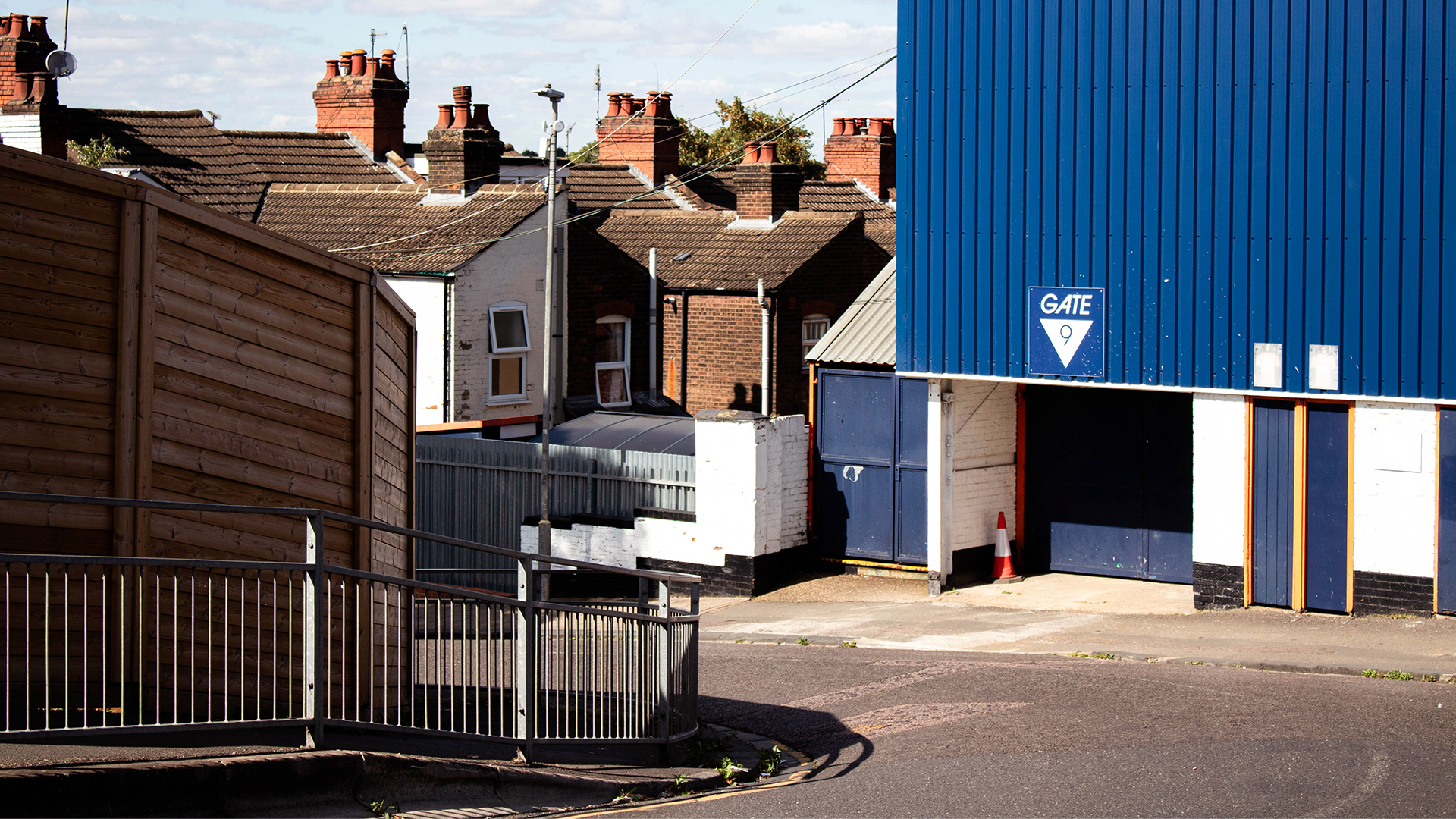
Images courtesy of Populous
By June 2026, an imposing 27m high, crown-shaped, red brick landmark is expected to greet locals and visitors as they enter the city of Wrexham.
The new stand at Wrexham Association Football Club is set to become a “unique piece of stadium architecture,” and, if completed, will symbolise the revitalisation of both the football club and the Welsh city.
There is much riding on the shoulders of the new Kop stand; it’s the key to the club’s continued expansion and the first phase in the city’s gateway regeneration scheme. But the rollercoaster saga behind the Kop rivals the scripts of its Hollywood A-list celebrity owners, Ryan Reynolds and Rob McElhenney, two football novices who have navigated the UK’s funding, planning and legal landscapes for the last four years.
With just a year to complete the new five-storey stand, the saga, already told through an award-winning Disney documentary series, is set to further enthral football fans across the globe.
When the two Hollywood actors completed their takeover of the small club in north Wales back in February 2021, the footballing world was stunned. Neither had any experience nor history with UK football. For its part, Wrexham AFC was in the doldrums, relegated to playing in non-league football and wholly owned by its dedicated supporter’s trust.
“The club was struggling,” recalls long-standing Wrexham AFC fan and former RICS Wales board member, David Subacchi FRICS. “Attendances were not good, and the condition of the stadium was starting to deteriorate. It was depressing as a whole for Wrexham because so many people here judge the temperature of the city by how the football club is doing. It means a lot to them.”
It was this enduring connection between the club and its community that captured the attention of the two actors. The club was founded in 1864 to give Wrexham’s young working-class men “an enriching hobby”. It is now the third oldest professional association football club in the world, while the Racecourse, as it’s lovingly known, is the world’s oldest international stadium, having hosted the first-ever Wales match in 1877.
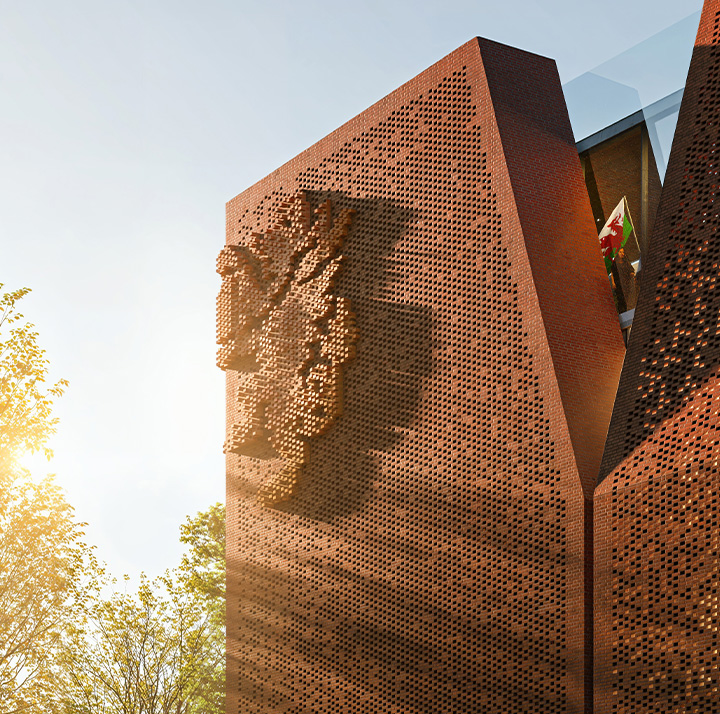
“So many people here judge the temperature of the city by how the football club is doing. It means a lot to them” David Subacchi FRICS
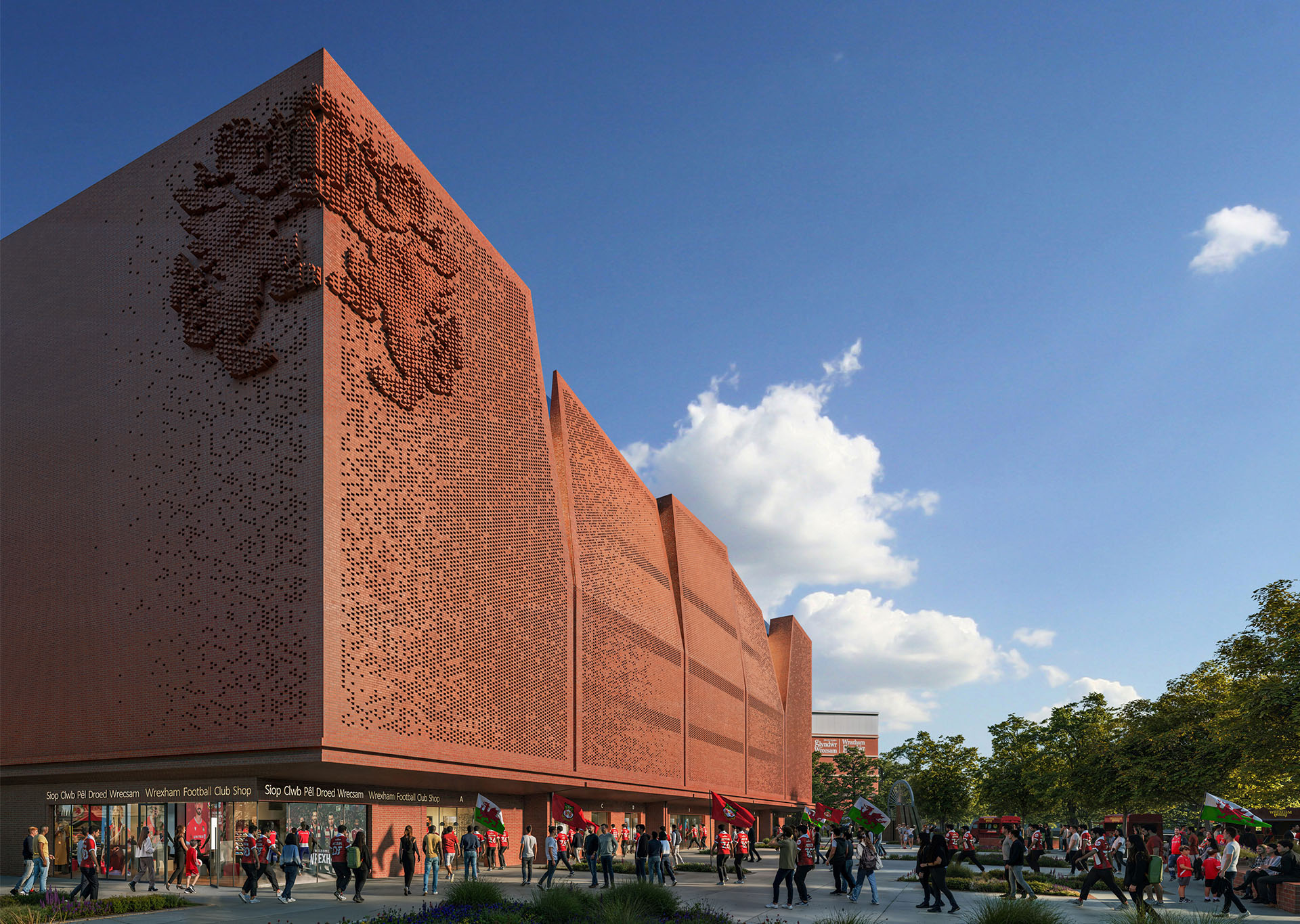
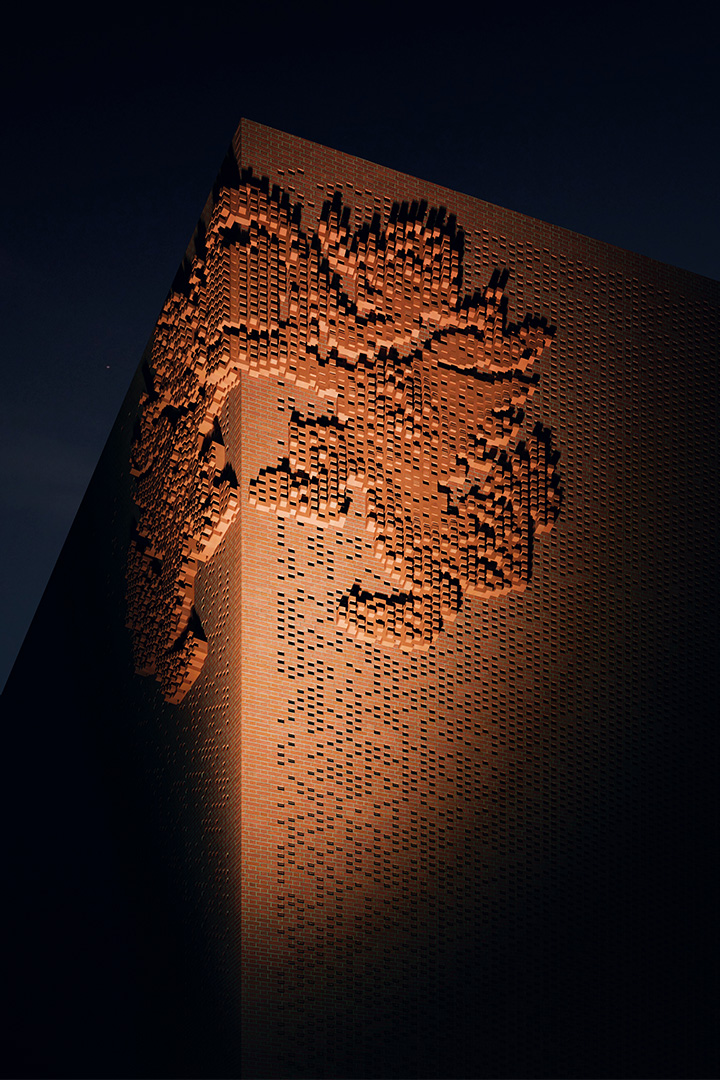
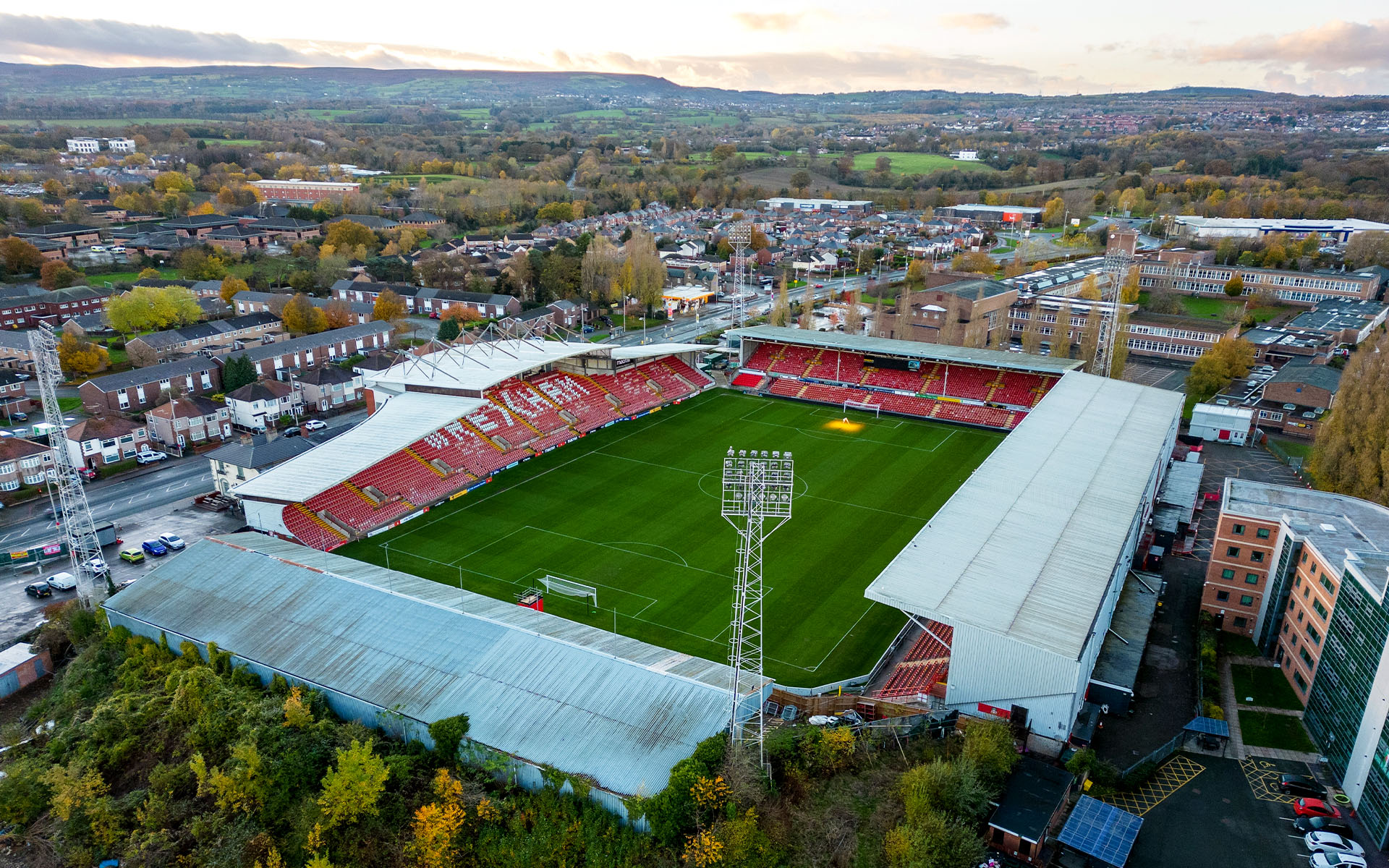
Wrexham Stadium in 2022
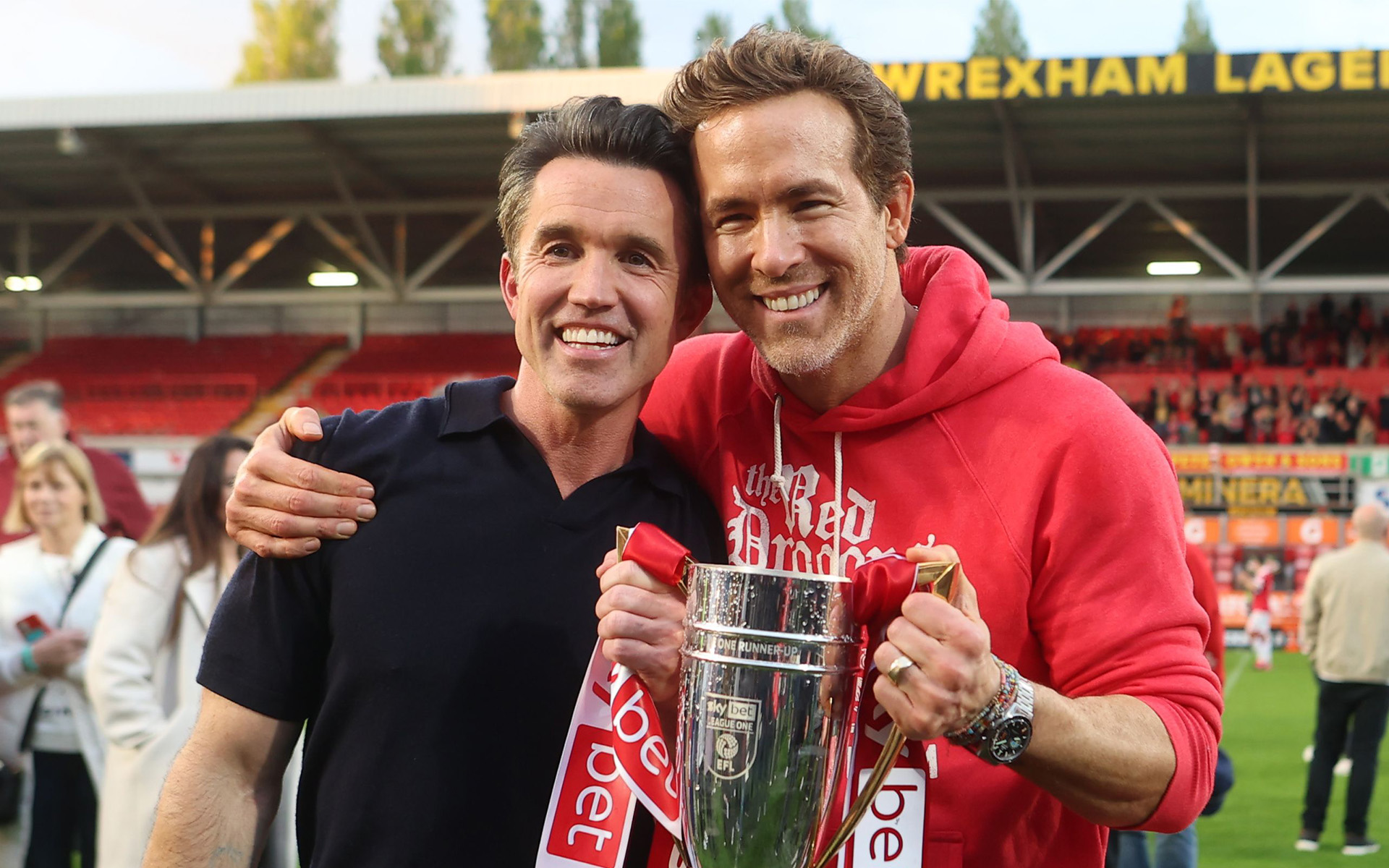
Wrexham co-owners Rob McElhenney and Ryan Reynolds as they celebrate promotion to the Championship in April 2025
Revitalising Wrexham
While Reynolds and McElhenney were always clear on their sporting ambitions for the club – Wrexham returned to the English Football League in 2023 after a 15-year absence and has just achieved a historic third consecutive promotion in three seasons to the Championship – they also wanted to tell its story. “This is more than football,” McElhenney has said. “It’s about revitalising the town.”
The proposed Kop redevelopment is central to this revitalisation, for both the city and the club. It will restore the renamed SToK Cae Ras stadium to a four-sided ground after the original stand was condemned in 2008 and a temporary one erected in 2023 by the new owners. Crucially the new Kop will bring the stadium back up to international match standards, opening the city to the potential economic benefits of welcoming a new set of football fans. It will also mark phase one of the Wrexham Gateway, a regeneration project led by local public sector partners keen to capitalise on the top-flight ambitions of the club.
Significantly, the Kop is designed by Populous, the architect behind Sphere Las Vegas and Tottenham Hotspur’s £1bn stadium that opened in 2019, which was also the centrepiece of a regeneration scheme in the north London district.
“The incredible things happening at the club are continuing to propel Wrexham onto a global stage, and football is bringing communities together, boosting local pride and helping to attract visitors and investment,” says Mark Pritchard, leader of Wrexham Council on its partnership with the club.
The stand design was given planning approval in March and includes seating for an extra 5,500 Wrexham fans. Additional capacity has been built into the design to future-proof the stand, although it will be dependent on further planning approval. And the roof has been acoustically designed to enhance the spectator experience.
At the back of the seating will be a five-storey development with new hospitality, player and media facilities and the potential to host non-footballing conferences and exhibitions. To the front will be a new public plaza, while the exterior of the Kop will be encased by an eye-catching red-brick lattice to provide a new city landmark as people exit and enter Wrexham.
The proposed Kop is a significant departure from usual stadium designs, with the owners’ seemingly keen to play tribute to the long history between the fans and the club as well as the city’s industrial heritage. The red-brick façade is a nod to the city’s history as a manufacturing centre for red brick and terracotta tiles. The club’s nickname The Red Dragons is immortalised in one corner with two large, embossed dragon designs.
The angled planes at the top of the façade represent coal and slate seams, referencing Wrexham’s long mining heritage. Outside the main stadium is the 100k Plaza, named in honour of the fans who, in 2011, saved the club by raising £100,000 in just one day. The club also plans to add a memorial to the 261 miners killed in the 1934 Gresford mining disaster, many of whom were loyal Wrexham fans.
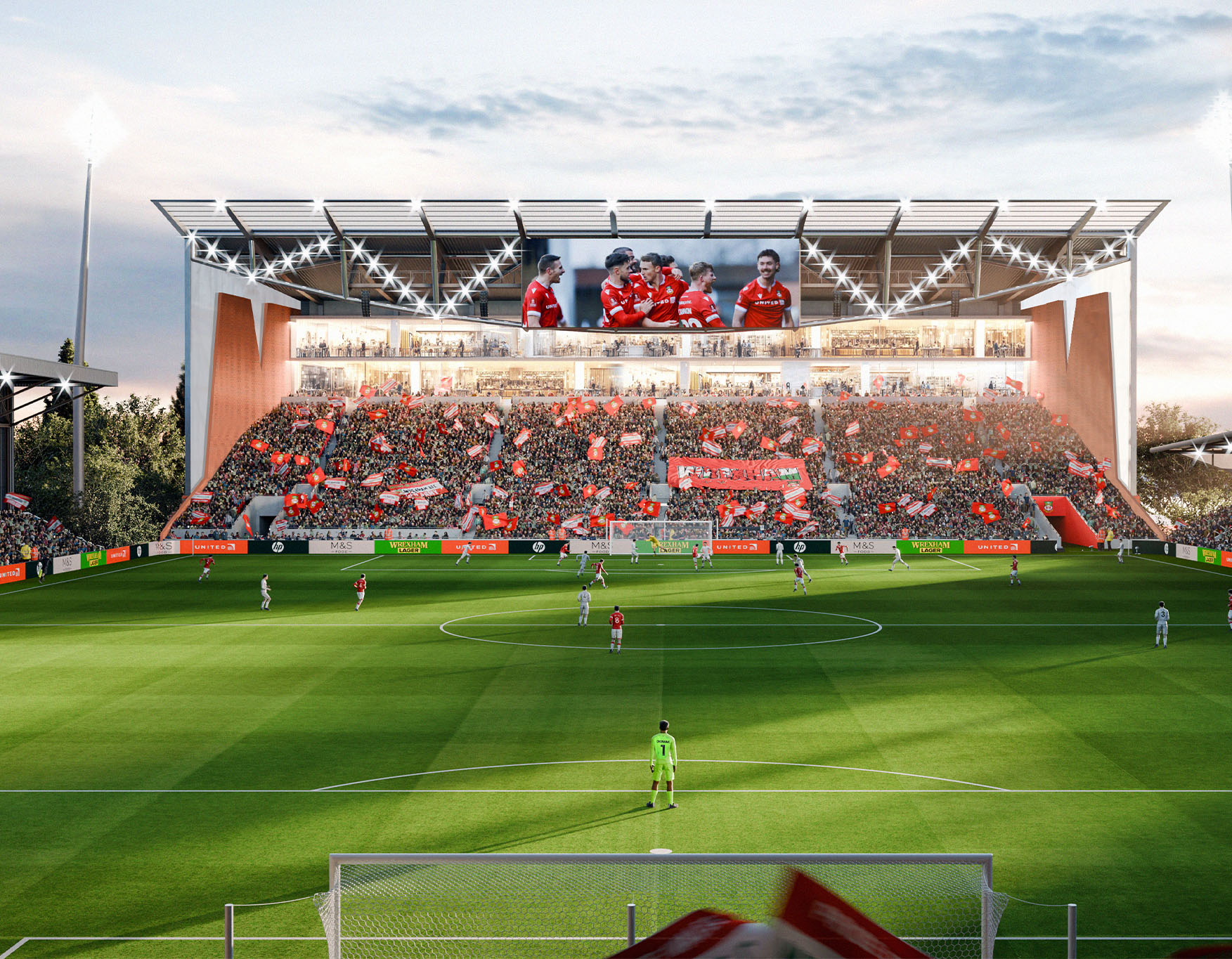
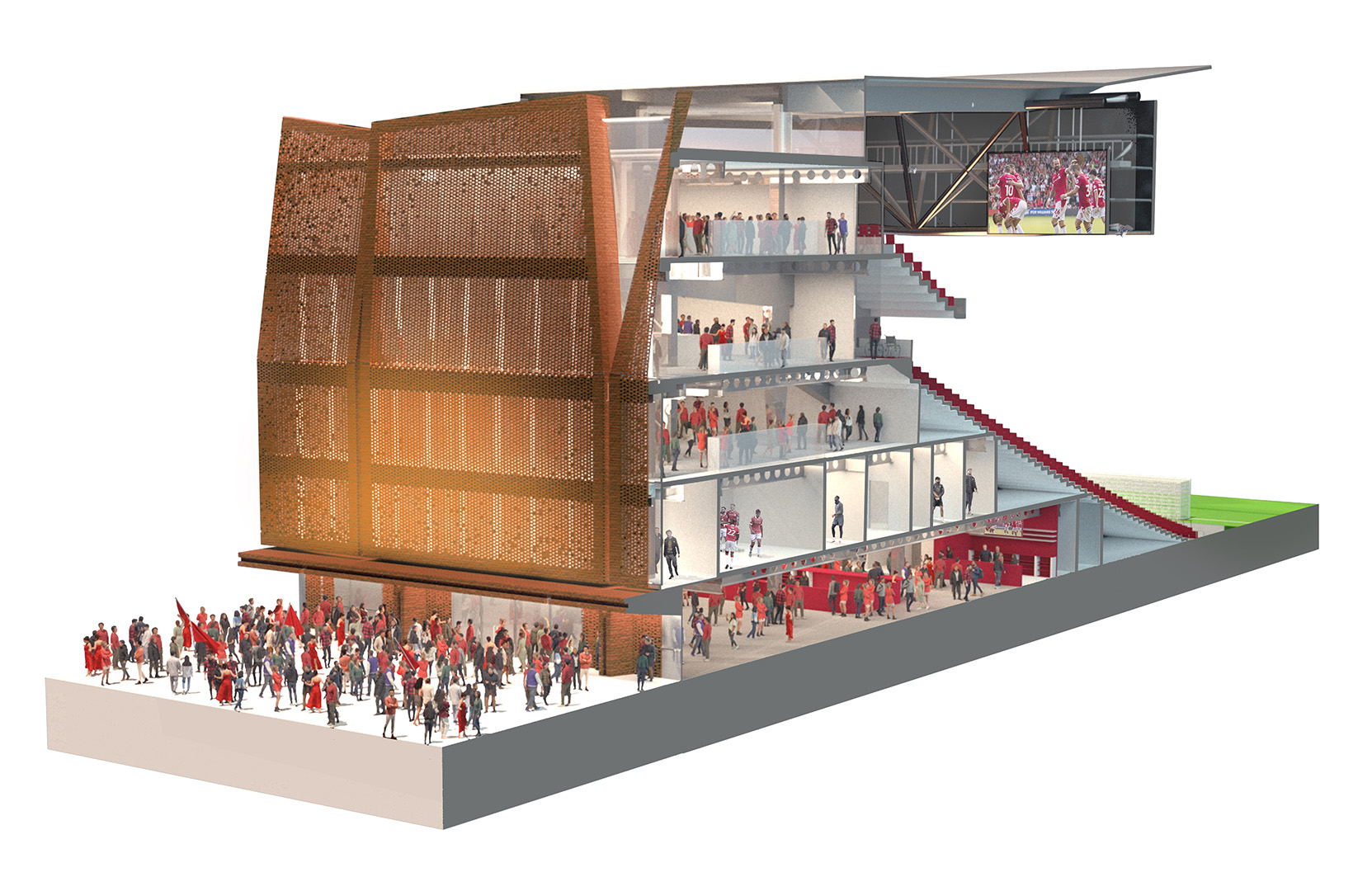
“I’m interested in the impact it has economically on the city and in some of the challenges that anybody involved in a project this size is going to face” David Subacchi FRICS
Planning problems
But as the journey of Wrexham AFC has been meteoric on the pitch, with an estimated 100m households globally watching the team play last season, the path to the new Kop has been decidedly rocky. The designs are the second to gain planning approval with the club scrapping its original 2022 plans from architect AFL last year.
Part of the issue has been funding. The club and its public sector partners twice bid for more than £18m from the government’s Levelling Up Fund, citing the Kop redevelopment as a key part of Wrexham’s regeneration. It was rejected twice. The council then transferred a “substantial” part of a £25m grant from the Welsh government to kick start it, but that came with conditions, notably that the Kop would be up to international standards. The club and the council then spent over a year in protracted grant funding negotiations, with McElhenney noting in the Disney documentary Welcome to Wrexham: “All those regulations are there in place for a reason, but it’s a lot harder to build in the UK than, I found, almost anywhere else in the world.”
In October 2024, the club went back to the drawing board and the new Populous design, not dissimilar in size and scale from the first, flew through planning earlier this year. Work is expected to start shortly. Unsurprisingly, given the difficulties of the redevelopment, the club is remaining tight lipped on precise timelines and the contractors involved in the next stage. The design and planning team included Populous, Buro Harrold, Gardiner & Theobold and Savills.
The Kop may also herald stage one of a major stadium overhaul with owners Reynolds and McElhenney making no secret of their desire to create a 45,000 to 55,000 capacity ground.
For the fans, the new Kop will be a visible mark of Wrexham’s replenished fortunes, albeit with a tight deadline. “Yes, it’s challenging, but I put my money on these owners – if they say they’re going to do it, they’ll do it,” says Subacchi. “But I’m not only interested in the football. I’m interested in the impact it has economically on the city and in some of the challenges that anybody involved in a project this size is going to face. It’s fascinating.”
Wrexham AFC was approached for comment for this feature, as were Savills, Gardiner & Theobold, Populous and Morgan Sindall Construction, but all declined to speak.


